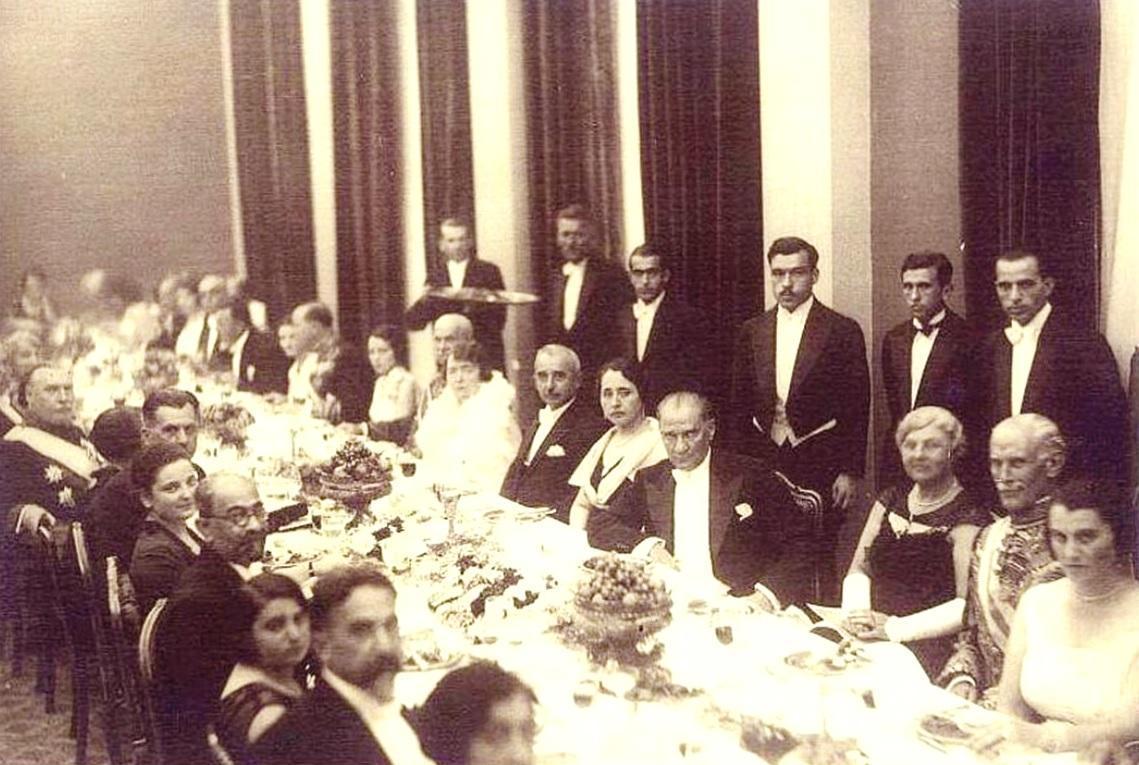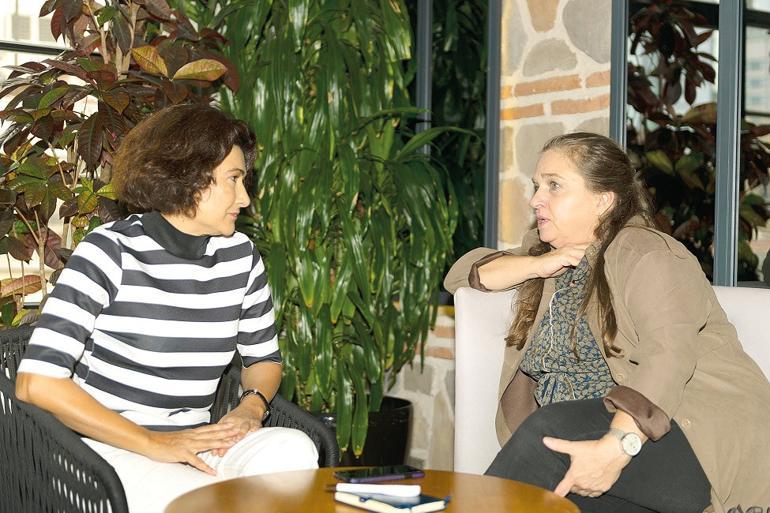Atatürk 'used gastro diplomacy despite limited means in Ankara'
Barçın Yinanç - ISTANBUL

Although he had spent most of his life in the battlefields before becoming Turkey’s first president, Mustafa Kemal Atatürk was meticulous about the official dinners he hosted at the presidential residence, according to an expert. Despite Ankara’s mediocre means in the early days of the Republic, every detail was thoroughly thought out especially for the dinners for foreign dignitaries, said Tan, adding that “Atatürk was aware of the importance of gastro diplomacy.”
Atatürk had been a soldier until he became the president of the Republic, yet he had to host the first official dinners at the then presidential compound, called the Çankaya Köşkü (mansion in English). Tell us about the dinner tables at Çankaya Köşkü.
During the early days of the Republic, Ankara was a sleepy, dusty little town. It didn’t have the quality and diversity of Istanbul or İzmir. There were no dining places, especially places you would be going with ladies, in the Western sense.
What Atatürk did was to introduce dining to Ankara. He promoted some restaurants to be established by calling in renowned chefs, like Russian Armenian Karpitch. He initiated the culinary scene in Ankara. He was a soldier to start with, but he knew all the fine life of the Western world. He was in effect a bon vivant.
Coming out of the war; Anatolia was dilapidated. As the rest of Anatolia, Ankara was also in a very bad condition. It needed a kind of livening up. So he added a new lifestyle by introducing balls, fine dining, also tea ceremonies. At that point one mention goes to Latife hanım.
Latife Uşakkizade, whom he married on 29 January 1923, nine months before the declaration of the Republic.
The relationship with Latife hanım started at a table and in a way, ended at a table. Atatürk was in İzmir at the end of the War of Independence. Latife hanım arranged a beautiful table for him and his companions in the mansion in İzmir, the house they gave to the service of Mustafa Kemal. That table was very presentable with all the right cutlery, the porcelain, the crystal glasses, all rightly chosen, very tasteful. Everything was meticulously prepared, it was perfect. A polyglot, Latife was highly educated; she played the piano. She was the right one, the very first first lady of the Republic to bring to Ankara. She fitted into the exact frame Atatürk needed because he also wanted ladies at the dining tables, not just all men occasions.
Latife hanım also arranged tea parties, which became very fashionable among Ankara ladies, wives of the other protocol, starting with Mevhibe hanım, the wife of İsmet İnönü (the republic’s second president).

It seems these receptions were organized at a time when not much was found in Ankara.
At that time if you depended on what was available in in the Ankara market, you could not even set a table with a set of similar plates, glasses and cutlery. Even ordinary water glasses were not available, let alone fine glasses to serve to your guests. Latife hanım brought seven camel loads of dowry from İzmir: fine Sévres porcelain, Christofle cutlery, Bohemian crystal glassware, embroidered linen tablecloths and napkins… She practically transferred her dining table to Ankara.
Later, some special glasses and tableware were ordered from European established companies. For example, if you visit the museum in Çankaya Köşkü, you can see the table set as if guests are about to arrive, and some of the glasses have the initial GMK for Gazi Mustafa Kemal and the other KA for Kemal Atatürk, before and after he got the surname Atatürk.
It seems that Latife hanım’s presence in Ankara, her invitations were interpreted as symbolizing the new image of the new Republic.
There is an article in New York Times that states: “Mrs. Kemal” serving tea to foreign journalists. Her western manners were praised and described as “shattering five centuries of tradition and bringing a modern European atmosphere into the life of the new Turkish government.” She was the image of the progress of women in the new Turkish society.
But Atatürk’s tables were also all men tables.
Atatürk had two dining tables; one for working. He and his friends were having long nights working and taking notes. It was not only having good food and good company; these were also working dinners.
The other was his official dinners when, for instance, he would be hosting foreign guests. At such occasions, he was totally in control of everything to be served. For instance, in 1934, when Prince Karl Gustave of Sweden came to Turkey, he was offered a well thought over menu. While the menu had Turkish specialties, it also had specialties like asparagus soup to satisfy a western palate. Atatürk had promoted the cultivation of asparagus in a farm near Yalova, as it was a highly regarded product, being a vegetable of kings and the nobility. The menu had certain kind messages to the guest. The desert in honor of the guest was called Parfait Glacé Stockholm; of course, it was not Swedish ice cream, but he was making a gesture to his guest.
The white wine served was called the Perle d’Ankara, and the red was Rubis de Çankaya. That is “Yakut” in Turkish,
probably the same one still in the market.
He was in a way so visionary in the early years of the Republic, he understood about gastro diplomacy and was also aware of the soft power that could go through gastronomy.
He had spent some time in European cities, where he could observe Western habits.
Indeed, when he was a military attaché in Bulgaria, he was attending balls, dinner receptions. He also started the Republican balls. Ankara Palace (located in the capital’s Ulus district), which would later to be used for official banquets, was being constructed. The very first one probably took in İnönü’s house (called the Pink Mansion). After its opening in 1928, Ankara Palace became the venue for the balls. In 1935, Karpitch opened his restaurant under the name Şölen (meaning feast), later named Karpiç. This was the first restaurant where men and women could go together. This was then followed by Süreyya and later Washington restaurant.
Coming back to Atatürk dinners, it seems there was an occasion every night.
I think Atatürk never ate alone in Çankaya Köşkü. It was not like a family house but more like a working quarter. The table was always with close friends of Atatürk, and they also kept working. And that’s why we can say that the relationship of Latife and Atatürk ended at the table. It was no longer leisurely tables but working dinners, and Latife could not adapt to that. She could not make the balance when to interfere, how to handle this. Eventually, the conflict started. Reportedly it was after a quarrel at the table that Latife had to leave. But Latife was also concerned with Atatürk’s health. These dinners went on and on until late night; drinking and smoking went on and on. It deteriorated Atatürk’s health. She wanted to protect Atatürk’s health condition.
















